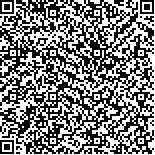| 摘要: |
| 古建筑作为城市文化的基本载体,
是城市文化复兴的重要场所。古建筑的更新方
式和利用形式多种多样,其更新利用一直是古
建筑保护研究的一个重要方向。为实现西藏
城市、建筑文化的复兴,充分发扬和利用绚丽
多样的地域特色文化遗产,通过对西藏古建
筑邦达仓的更新改造与利用情况进行深入调
研,对各阶段使用情况进行对比研究,总结出
西藏地区古建筑尤其是民居类古建筑在更新
利用过程中所存在的问题并针对性地提出建
议,为西藏古建筑更新提供参考。 |
| 关键词: 西藏 古建筑 更新 利用 邦达仓 |
| DOI:10.13791/j.cnki.hsfwest.20200516 |
| 分类号: |
| 基金项目:国家自然科学基金项目(51568085);西藏自治区哲
学和社会科学基金项目(15BSH001);西藏自治区自
然科学基金项目(XZ2018ZRG-01) |
|
| Regeneration of Tibetan Ancient Residential Buildings: Case Study of Bangdacang |
|
WEI Qin
|
| Abstract: |
| Historic cultural heritage is an integral part of human civilization, as well as its
preservation. Architectural heritage is not only an important carrier of cultural heritage but
also one of its vital parts. In China, it has a large number of historic and cultural heritage
resources. To the end of 2018, the number of the National Key Cultural Relics Protection
Units reaches 4 295, alongside with 135 National Historic and Cultural Cities. People’s
consciousness and ability to preserve historic cultural heritage has been improved greatly with
the development of modern society and advanced technology. In Tibet Autonomous Region, it
has 55 national key cultural relics protection units and 3 National Historic and Cultural Cities.
Historic and cultural heritage resources are comparatively rich.
The renewal and utilization of ancient buildings has always been an important part in the
research field of the conservation of ancient buildings. The renewal methods and utilization forms
of ancient buildings are various. Many countries have development renewal theories and methods
of their own adjusting to their unique social and economic conditions. As to Tibet, the ancient
buildings in Tibet have their unique architectural style and elegant shape despite their geographical
and humanistic environmental influence, which has formed its own distinct characteristics such
as “回” shape layout, commonly use “column” or “Column Net” and “colonnade” to define space
and to carry load and extremely colorful and so forth. Therefore, it is necessary to develop suitable
theories and conserve methods with Chinese and Tibetan cultural spirits by progressing systematic
study of other countries experience and in-depth case study of its own renewal project.
In Tibet national key cultural relics protection units, 40 out of 55 are cataloged as ancient
buildings, accounting for 73%. In the renewal and protection of the ancient buildings of Tibetan
cultural relics, the religious ancient buildings basically keep the original function and form
unchanged in the process of renewal and maintenance, for example the Potala Palace and
Jokhang Temple. Due to the cultural importance of these buildings, they usually can access big
amount of maintenance fund, get great technique support and keep in good condition. On the
contrary, the residential ancient buildings have been in the weakest spot in the renewal process
due to lots of difficulties. Firstly, there are a large number of residential ancient buildings with
different size. Some of them are big villa with a group of buildings, the other may only have
one single building. Secondly, the ownership of the buildings are always complex. Most of them
belong to the government, but there are still a large number of residential ancient buildings under management of individual person or company. Thirdly, the reuse type are vary. Because of its residential features, it makes the renewal process very
difficult. However, if the residential ancient buildings are reasonably regenerated and utilized, it is the fullest display of the whole city’s architectural
cultural heritage and Tibetan plateau urban image. It is also the best persuasiveness way of protecting cultural heritage. In recent years, a growing
number of scholars have started the research on Tibet architecture in the aesthetics side or in function view. From the conservation aspect, the studies
on ancient buildings renewal are relatively weak.
In order to protect Tibetan city’s architectural culture and make full use of the stunning and diverse cultural heritage of regional
characteristics, this paper selected a typical residential ancient building in the heart of Bakor Street as the study carrier. Bangdacang is well-
known in both travelers and local residents by its typical Tibetan villa style and storyline history.
This paper sorts out the process of Bangdacang’s property ownership alternation through literature review and field research. Bangdacang
is under management of individual travelling group as a folk hotel and restaurant. It makes Bangdacang the most traveler friendly site of all
the national key cultural relics protection units in Lhasa by free access. After few times quick visit and three in-depth site surveys from 2012-
2018, makes a comparative study of the use in each stage. It can be summarized into three stages. The first stage is the period that Bangdancang
was the family house of Charong and later sold to Bangdacang. The second stage is the period between 1959 to the early 2000. Bangdacang was
used as government department office, post office and public house. The third stage starts from early 2000 till nowadays. Bangdacang is under
management of several individual person or company, being used as tourist center, folk hotel and restaurant.
This paper also summarizes the main problems existing in the process of renewal and utilization of residential ancient buildings in Tibet
and puts forward some suggestions to provide references for the renewal of ancient buildings in Tibet. As to Bangdacang, there are few problems
needs to be solved in order to protect the old buildings. Firstly, the utility system is quite obsolete with fire hazard. Secondly, it is an ancient
building with specific function and layout, therefore it must be put in a suitable way of use. Bangdacang has near 2 800 m 2 but only 32 room with
89 beds. Thirdly, it has no enough funding and extremely less government funding. This makes more obstacles for the maintenance progress.
Fourthly, there still has planning permission and building control issues need to be addressed.
As one of the most typical residential ancient building in the Bakor area and even in the whole Tibet, its renewal and conservation should
draw more attentions and get more support from the government and the public as well. |
| Key words: Tibet Ancient Architecture Regeneration Bangdacang |


